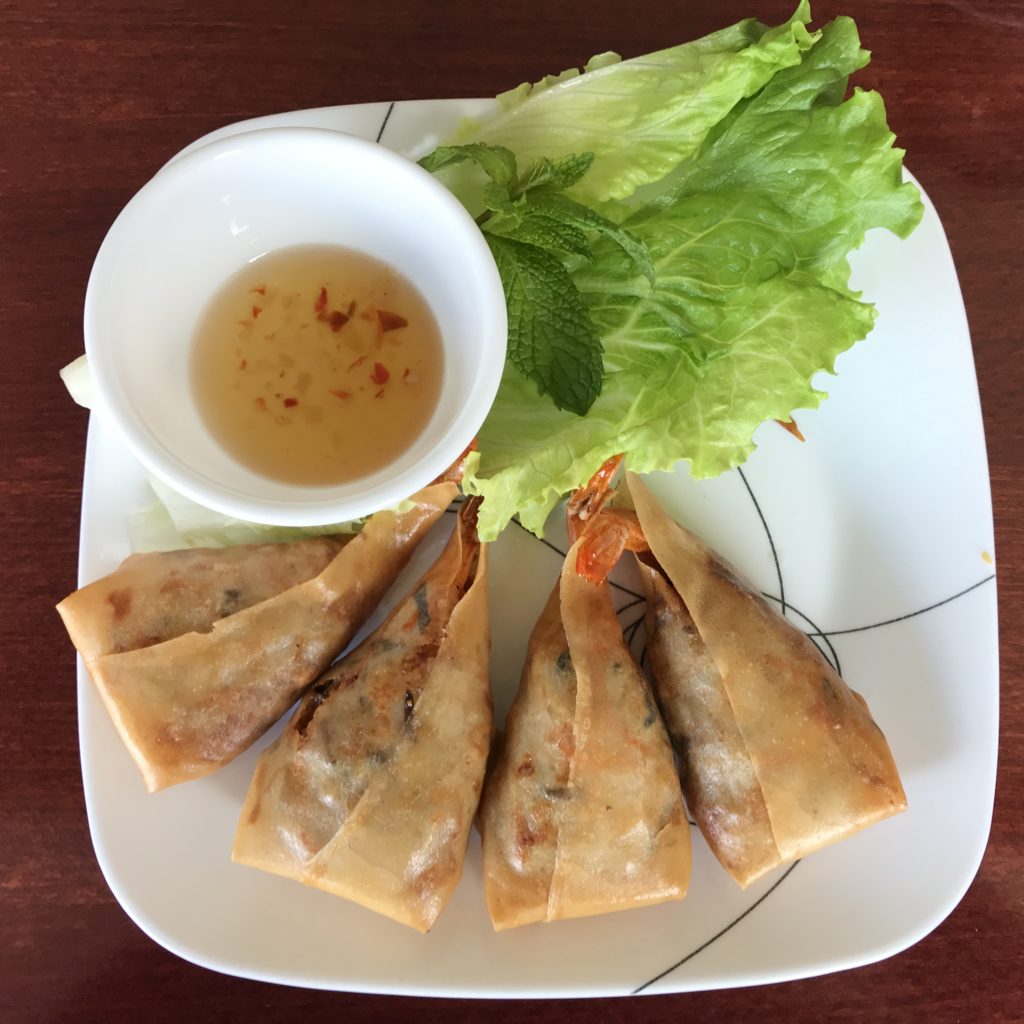Theresa Tran did not want to run her mother’s 30-table Vietnamese restaurant, Saigon Pearl, when her mother decided to retire in 2011. She loved cooking at the place on 8th Avenue in the theatre district, but being a full-time manager was simply too much work, because she already had a job at the post office.
With none her children willing to inherit the restaurant, and unable to entrust the business to anyone outside the family, Tran’s mother closed the restaurant and sold the business to a Thai restaurant.
But when she passed away in 2014, Theresa had a change of heart. The best way to honor her mother, she decided, was to do what she did more than 25 years ago—open a small restaurant that serves heart-warming, home style Vietnamese food.
That’s how Little Saigon Pearl came into being. Located near the intersection of 86th Street and Bay 35th Street, Brooklyn, it is in one of few Vietnamese restaurants in Bensonhurst, a neighborhood filled with Chinese restaurants and food stores, where Cantonese is one of most frequently heard languages.
Little Saigon Pearl is small—it has only five tables tightly placed close together in the dining area. During lunch time on a Saturday in February, the tiny restaurant was packed with customers, but at the same time the previous day, it was quiet and almost empty.
The restaurant serves typical Vietnamese dishes—spring rolls, Vietnamese sandwiches, fried rice and noodle soups. One of the featured dishes is Kim Tien roll, a triangular shaped spring roll filled with crab meat, ground pork, carrots, dried mushrooms and a whole shrimp, the tail of which sticks out from the roll.
It was created by Tran’s mother and named after one of Tran’s elder sisters, Kim Tien Tran.
“I walked 20 minutes from Bay Parkway to come here. It’s a good change [from Chinese food],“ said Landy Wong, 60, a Chinese immigrant in Bensonhurst who frequents the restaurant. She was picking up a pork chop with fried rice. “I always buy food for my grandchildren here. The kids love it.”
Bensonhurst is one of the neighborhoods in New York City with the fastest growing Asian population. According to the American Community survey and the 2000 Census, the Asian population in Bensonhurst grew by more than 35,000, or 70 percent from 2000 to 2016. But the Vietnamese population is a very small part of that population, growing from only 801 in 2000 to 955 in 2016.
Tran came to New York in 1989 when she was 17. She was one of the few Vietnamese who settled in the area before it changed from a primarily Italian neighborhood to one where Chinese and Eastern Europe immigrants are the majority.
Her journey to the U.S. was nowhere near easy. Her mother had fled Vietnam with five Tran’s 11 siblings under political tensions, but before they were allowed into the U.S., they spent four years at the Phanat Nikhom refugee camp in Thailand.
“It was terrible. It’s like you are in a concentration camp. You get limited water, limited food, and it was very crowded,” said Tran, a teenager at the time
The family was assigned to New York City with the sponsorship of a distant relative, and settled in Bensonhurst. Soon Tran’s mother set out to start a restaurant to support the family—as she had for years back in Vietnam, after her husband died. Tran said she doesn’t remember much about the restaurant back in Vietnam.
With Tran’s help dealing with the paperwork and some savings, Tran’s mother was able to open Saigon Pearl—a tiny restaurant back then—in Manhattan in 1991, and to expand several times.
Tran, who graduated college with a degree in computer science in 1998, could not find a job in the field at the time, so she worked two jobs—as an accounting assistant and a part-time cook at her mother’s restaurant.
“I learned everything from my mother,” Tran said. “Everything served here is what my mother taught me.”
Tran’s mother expanded the restaurant to the point when she no longer had the time to cook with all the management duties, but Tran wanted to keep Little Saigon Pearl small and still be in the kitchen.
“Running a restaurant of that size is a lot of hassle—you have to do inventory and monitor the employee—it was a lot to get done,” Tran said.
Another reason for the restaurant’s small size is Tran’s other duties—as a post office manager and the mother of a 12-year-old girl—meaning she can only be at the restaurant on some weekdays after work and on weekends. When she is away, the restaurant is run by Thien Tran and another older sister of Tran’s, Nga Tran.
Keeping the restaurant small enables her to maintain a closer and friendlier relationship with customers than she could have with a larger business, Tran said. The small dining area also made home style cooking possible.
“The food here is more authentic than that at Pho Tay Ho,” said Simon Wu, a customer, pointing at a larger Vietnamese restaurant across the street. “It feels less Americanized, less commercial.”
That taste comes from good ingredients and long hours in the kitchen. Nga Tran said in Vietnamese that she spends 12 hours in the kitchen every day, six to eight of which are spent on cooking a beef stock for the noodle soups.
“I see customers come back, bring friends and family, and they said they love my food,” Tran said.


Your Comments